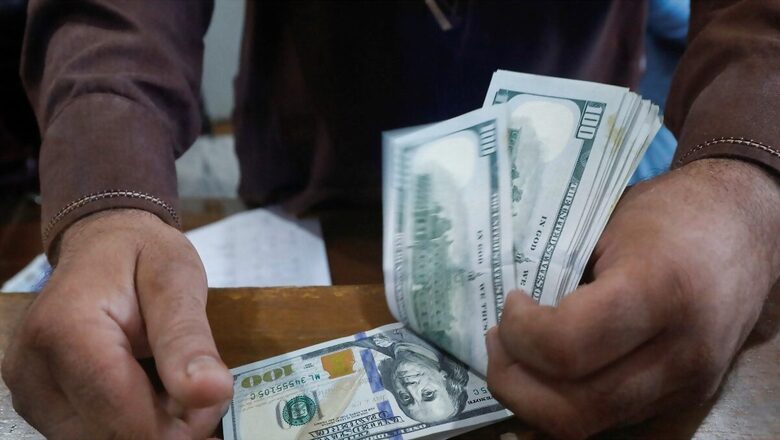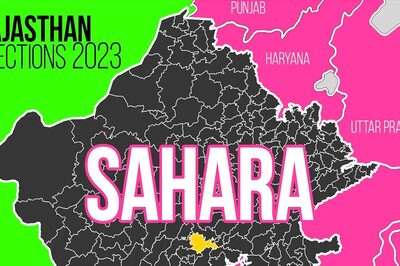
views
Pakistan has been addicted to foreign aid since its inception so much so that its existence is now dependent on it. According to various estimates, Pakistan has received around $155 billion in aid from 1947 up to 2022-23. However, the aid has been squandered away in an exemplary manner!
Pakistan Institute of Development Economics (PIDE) has come out with a report on the use of foreign aid by Pakistan that brings out some startling facts in this regard. The report highlights how the elite in Pakistan and the international consultants are the only two sections that have benefited from this aid.
According to this report titled ‘Foreign Aid Donors and Consultants: Analysing Pakistan’s Foreign Aid inflows and its Outcomes’, “both the donors and Pakistan’s civil servants (primarily civil bureaucracy and military) are responsible for the foreign aid bearing little in terms of development over all those decades. Over time, they have developed a healthy relationship that is based upon looking after each others’ interests. Donors, for example, can push loans through the official machinery without due diligence or need assessment (whether the loan is needed at all?) while the civil servants can enjoy perks like paid foreign tours, project allowances, project posts, consulting and post-retirement work with donors.”
The report reveals that the global consulting industry has also made its mark in Pakistan, with big consulting firms like McKinsey picking up contracts for various projects and assignments. The discussion over its work in Pakistan and its evaluation is rare. Pakistan first hired consultants in 1949, and the trend continues till now, with either the donors or the government handing out contracts to donors. An effort to develop Pakistan’s own home-grown consultancy was initiated in the early 1970s, with the establishment of organisations like PEC and NESPAK. However, the policy did not make much headway as the influence of external donors and lack of policy continuity plus government support led to fizzling out of this initiative. But it left these organisations largely dependent upon public dole without much to show for (especially PEC).
Too many projects, too little development
With the help of foreign aid, Pakistan starts on average more than 1300 projects every year. PIDE has analysed 250 such projects to gauge the final outcome and the results tell a story of how international aid money is getting wasted in Pakistan. According to this analysis, there was no outcome for 32 per cent of the projects, 28 per cent were delayed, 4 per cent were unsuccessful, there was zero disbursement for another four per cent of these projects, one per cent was cancelled and only 13 per cent were successfully implemented. Even those projects which have been put in the category of ‘successful’ only met the criterion of the foreign aid being spent within a stipulated time. Their impact has hardly been measured.
According to PIDE, till end-June 2022 (FY 21-22), 238 donor-financed projects were running across Pakistan worth $33 billion (95 per cent on loans), the majority of them delayed due to one reason or the other.
By now, Pakistan’s external debt liabilities stand at $127 billion (and increasing), with ever-increasing dependency on external inflows to finance consumption and investment, and to repay the earlier accumulated debt. Reportedly, in the first quarter of this fiscal year (FY 23-24), debt repayments (of which a substantial portion was on repaying foreign debt) were equivalent to the total income of the federal government, informs the PIDE report.
Military aid benefits donor countries
A major chunk of aid received by Pakistan is in the form of military aid. These are short-term inflows which are creating long-term benefits not for Pakistan but for donor countries. And Pakistan also ends up doing ‘debt servicing’ and paying huge ‘commitment charges’, if this aid isn’t used.
PIDE has cited the example of military aid given by the US to Pakistan for F-16 fighter jets. “Pakistan has been using these jets since the 1980s as American aid started flowing in. While all aid may not have been tied, a substantial portion was, specifically to buy creditors’ weaponry (F-16 jets and Cobra Gunship helicopters are two examples of major purchases through US aid). This was repeated in the early 2000s as Pakistan became an ally in America’s ‘War on Terror’ when Pakistan placed an order for the advanced Block 50/52 version of F-16s (earlier versions were A and B Block-15 series) using US inflows. For context, the deal created an estimated 7,000 jobs along the supply chain, across the US, creating a present and future revenue stream from manufacturing and services, upgrades, training and spares, etc.”
According to different estimates from various international agencies, almost 40 per cent of Pakistan’s population lives below the poverty line. Around 40 per cent of people in Pakistan are illiterate. Pakistan has the highest number of out-of-school children in the world with more than 23 million children not attending the schools. The female literacy rate is only 48 per cent which implies that the majority of Pakistan females are not able to get even basic education. Pakistan spends per capita $38 on healthcare which is much lower than most other developing countries. Around 33000 physicians graduate every year from medical schools out of which 40 per cent leave the country. The healthcare infrastructure is non-existent in provinces like Balochistan, Sindh, and Khyber Pakhtunkhwa.
It is clear that Pakistan has failed miserably to use foreign aid for its common people. So, the question is: where has all this money gone? The international community and especially the global financial institutions need to come out with answers. The money doled out by these institutions to Pakistan is contributed by other countries as these institutions are supposed to help the countries in ‘need’, not in ‘greed’.
The writer is an author and columnist and has written several books. His X handle is @ArunAnandLive. Views expressed in the above piece are personal and solely that of the author. They do not necessarily reflect News18’s views.



















Comments
0 comment